Why Barefoot Skiing is Your Next Addiction
Barefoot skiing isn’t just a sport; it’s an adrenaline rush through your feet that will turn anyone into a junkie.
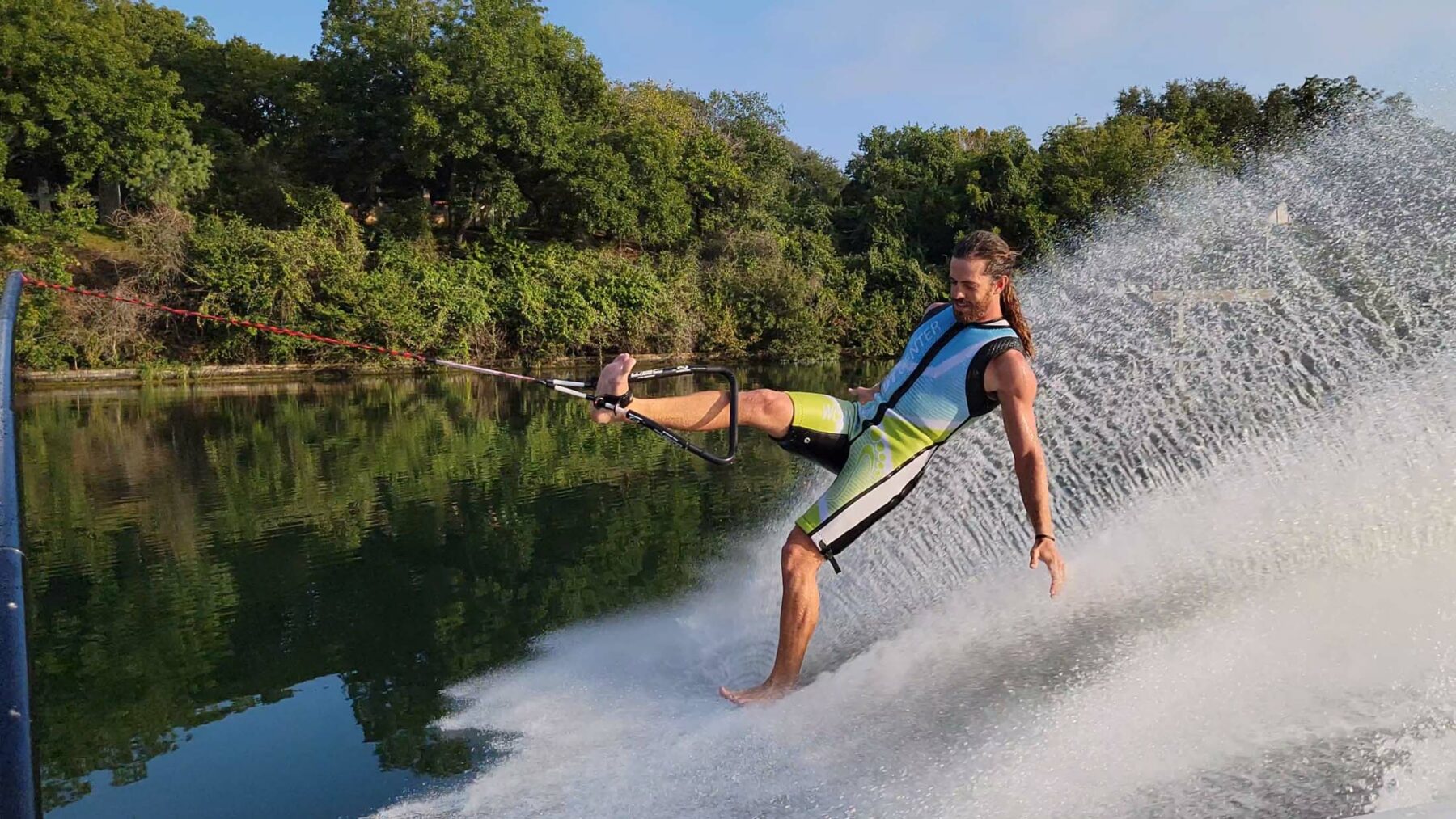
High risk, high reward. And, of course, no shoes or foot coverings — just your feet.
Barefoot skiing means more speed to keep the skier on top of the water, more difficulty and a rush of adrenaline like no other.
There’s much to accomplish to reach the International Waterski & Waterboard Foundation’s World Barefoot Waterski Championship. For barefoot skiers with dreams and big water to fill, you must have already skied in nationals, meet minimum qualifying scores for division, receive qualifying scores for slalom tricks and jumps, and be chosen and endorsed by the American Barefoot Club to ski and represent the U.S. at the World Championships.
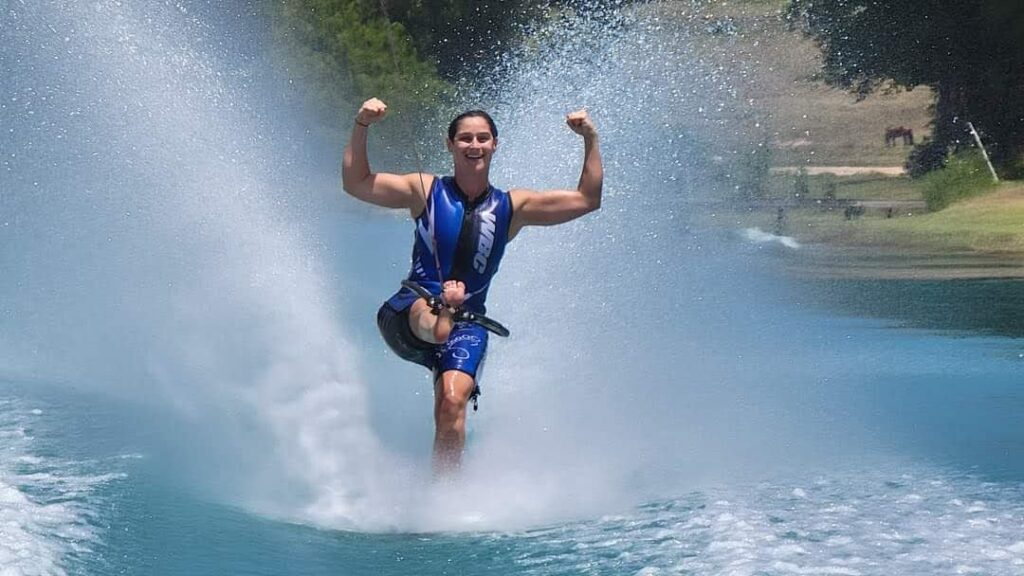
Courtesy of Lauren Ehlers
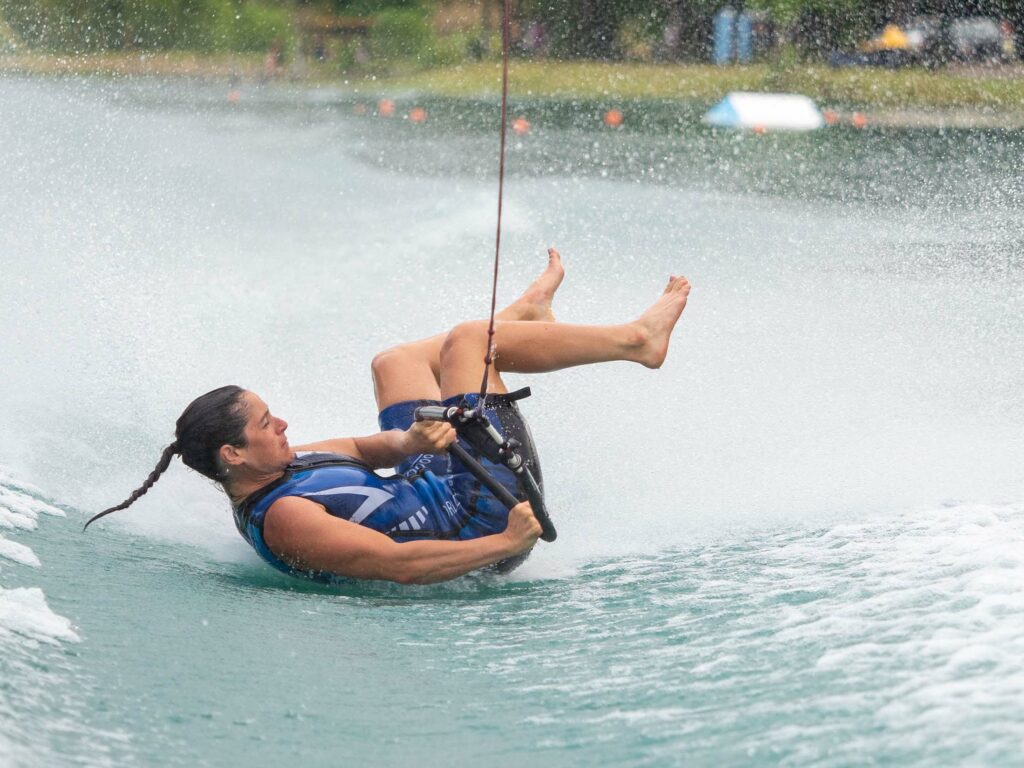
Courtesy of Lauren Ehlers
Barefoot skiers like Lee Stone say a lot of people have the misconception that speed and strength are required for barefoot skiing.
“I can assure you that there are plenty of people who are not muscle-bound and (of) every body type you can imagine (who) can barefoot (ski),” Stone says.
You could say that Stone is skilled in barefooting, as the National competitor from the last Master’s World Championship has been barefooting for 35 years, was the American Barefoot Club president from 2004 to 2005, coached the U.S. World team for 12 years, and is a level one judge and level two driver.
“The initial fear (of barefooting) is just being on the water and not having any skis,” Stone says. “It’s retraining those muscles that aren’t used in the same way. You’re getting past the fear of the water and doing something you’re not necessarily comfortable with.”
Barefoot skiers can ski in all directions and perform a variety of tricks, including jumps. So, it’s no surprise that feet are a crucial part of this sport. Stone says certain foot shapes make for better skiers.
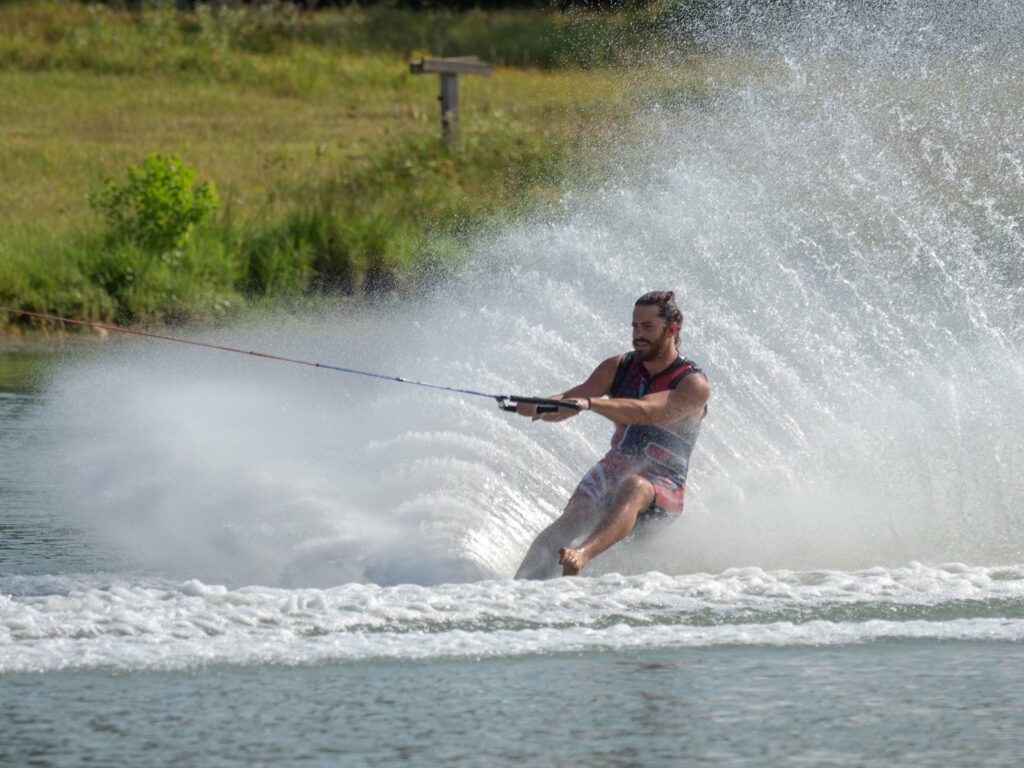
Courtesy of Lauren Ehlers
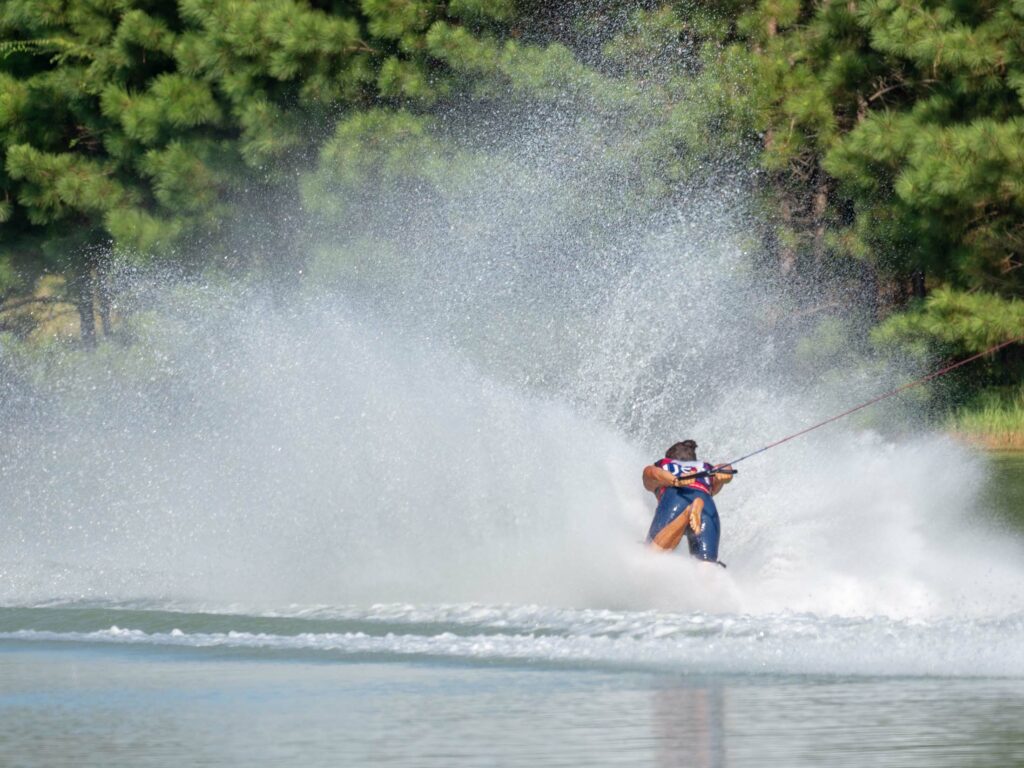
Courtesy of Lauren Ehlers
“Some of the skiers whose feet are much larger, flatter, wider have certain advantages over someone like me with a smaller foot with a high arch,” Stone says.
However, traditionally easier water sports like surfing and wakeboarding are taking a heavy toll on the barefooting community. For starters, there are few women in the sport.
Lauren Ehlers is the American Barefoot Club president and is ranked the top female in the U.S. Ehlers is one of about 100 women who complete barefoot skiing, and in the last couple of years, there have only been 25 female jumpers.
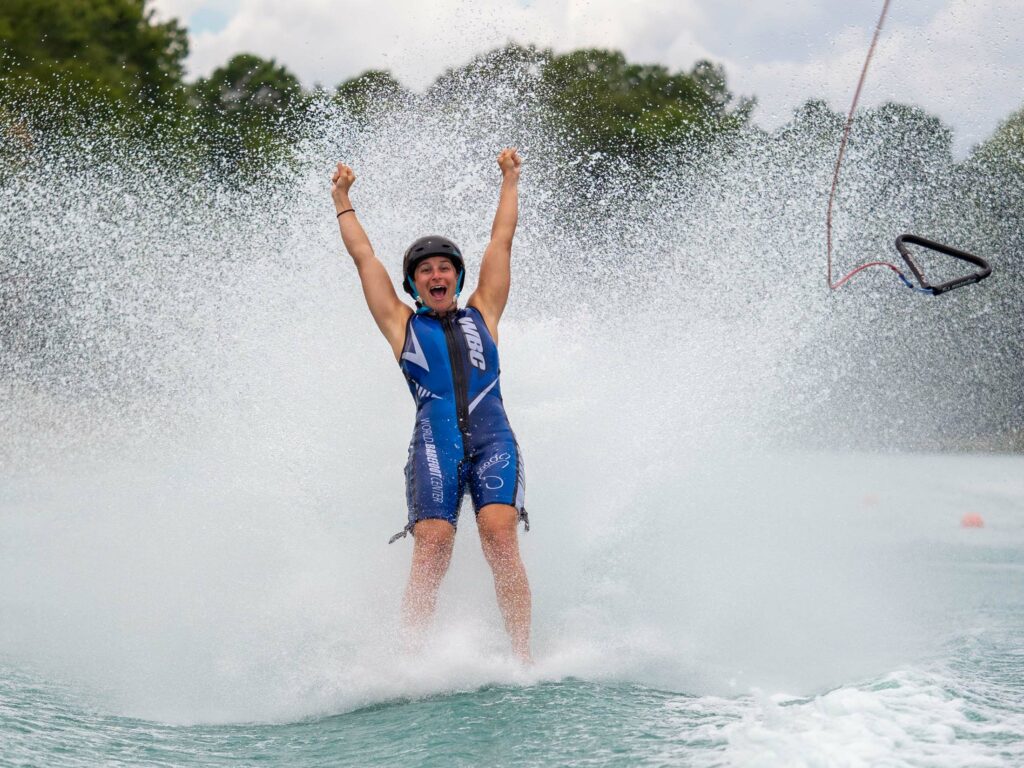
Courtesy of Lauren Ehlers
“We’re like a team; all the women are very supportive,” Ehlers says. “It’s not as competitive, and it’s not cutthroat. It’s more of a family (and) a pretty small niche within a niche.”
Landen Ehlers is the South Central Region director and a former Austin Barefoot Ski Club president. He grew up in the Austin Barefoot Ski Club and his father was on the U.S. team. While on the Texas A&M traditional water ski team, Landen met his wife Lauren and he pursued barefooting full-time after college while living at the World Barefoot Center. They both moved back to Austin and continue to compete in barefooting at a high level. The power couple were the first husband and wife to make it on the U.S. elite team and have both skied in the World Championships in 2016 and 2018.
Landen enjoys the oneness you have with the lake as you’re barefooting.
“It’s just you and the lake,” Landen says. “You’re connected via rope to a 450-horsepower motor that’s dragging you alone.”
Lauren says that barefoot skiers learn to love the thrill that pushes them through the fear and pain they might encounter.
“(I love) the adrenaline and unique feeling of having nothing but your body in the water,” Lauren says. “You’re not relying on anything else but your feet and the water underneath you.”
Adrenaline addiction doesn’t exist unless you try barefoot skiing. Few programs offer to teach the sport and few want to try it. Capital Area Water Ski Club president, Mark Zimmerman, helps organize water ski enthusiasts in the Austin area and hosts ski tournaments. The club teaches various forms of skiing including water, slalom, trick, jump, barefoot and wakeboard.
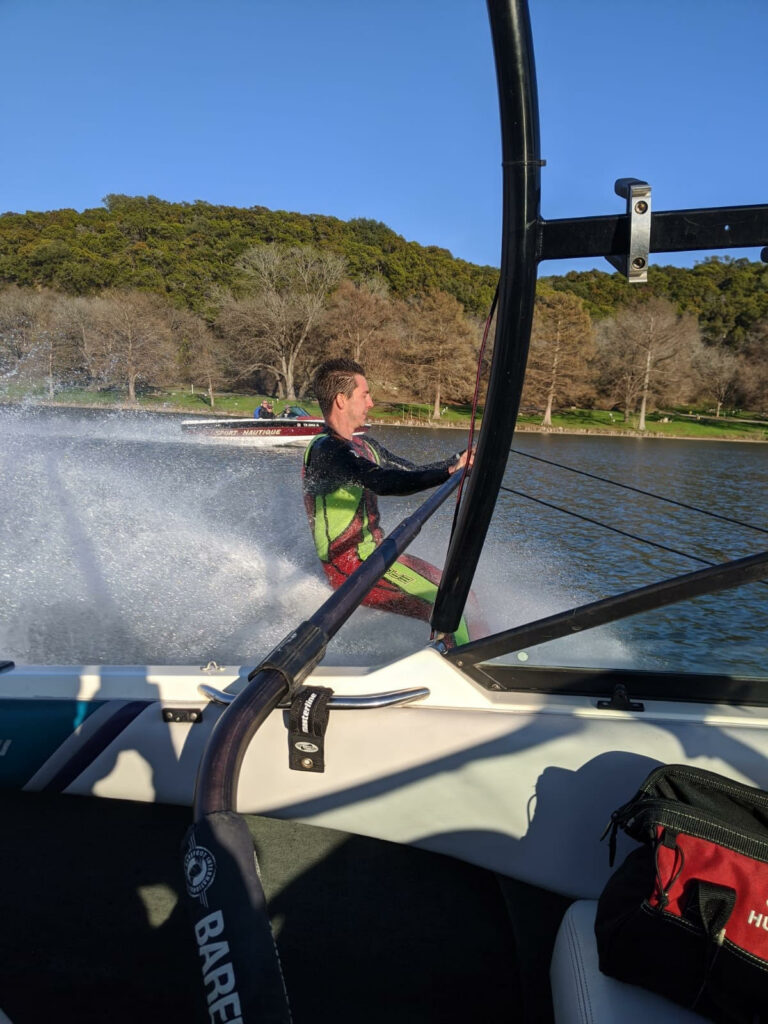
Courtesy of Mark Zimmerman
“Barefooting is the least popular (sport) because it’s the hardest one to do,” Zimmerman says. “There’s nothing between you; you’re walking on water — a surreal feeling.”
To learn the sport, it’s best to try it out with a barefooting veteran. The easiest way to learn is by attaching a boom (a horizontal pole that goes across the side of a ski boat) and holding on for life. The sturdy structure allows the barefoot skiers to glide to their feet as the boat moves 40 to 45 miles an hour. Once a beginner masters a boom, they can move to a rope behind the boat.
Like any other sport and outdoor activity, there are some risks involved, including hitting debris and becoming concussed from a hard fall. After a rainstorm, depending on the body of water you’re on, always check for any debris big or small. Being barefoot poses even more risks so consider buying shoe skis to provide a layer of protection between your foot and the water.
“You can run over sticks or logs or trash in the lake — that will break your foot,” Zimmerman says. “That happened to me once.”
Navigating the water is just as critical as skiing it. Your boat driver should be experienced and trusted and solely watch the water in front of the boat for any debris. Another person, the “spotter,” monitors the skier and their safety. The driver should shut down the boat immediately if they see anything that could put the skier in harm’s way.
But barefooting isn’t all technicality; it takes skill, too. Barefoot skiers must have good posture, flat feet, a strong core and their attention focused straight ahead.
In Austin, the most commonly recommended body of water for barefoot skiing is Lake Austin, as it has little inlets and tributaries where you can access some of its coves. Similar to traditional water skiing, it’s recommended to go when the sun comes up if you’re using public water.
Unfortunately, barefooting is a fairly inaccessible sport as it requires calm water, an experienced boat driver, a barefoot “veteran” and a specific boat like tournament inboards and outboard-powered boats. Yet, when you do get to partake in barefooting, there comes a sense of empowerment.
“It gives you such a good feeling of accomplishment because it’s just you in your body and pushing your body to the limits and seeing what it can do,” Landen says. “It’s a really beautiful thing.”






